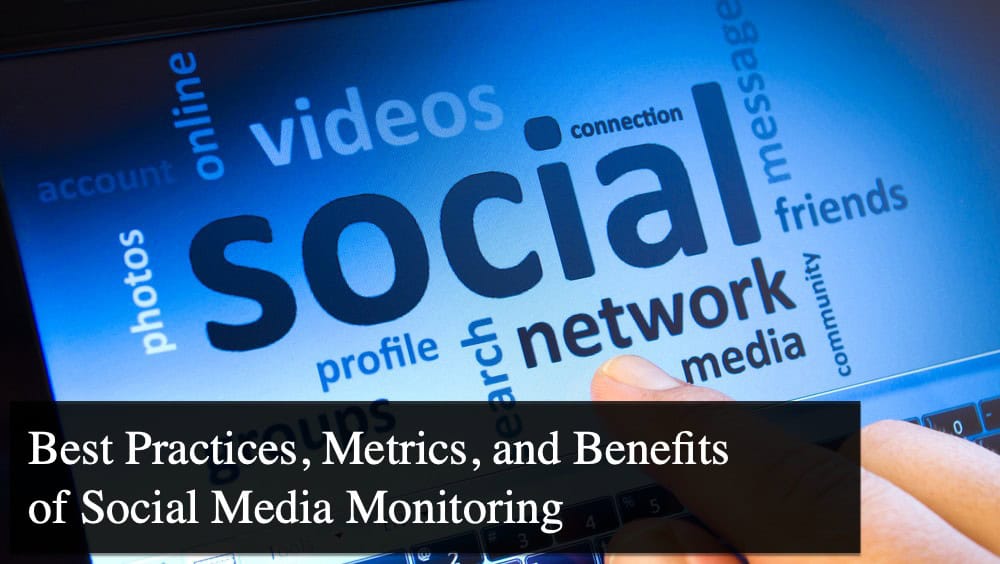
Social media monitoring, commonly called social media listening, collects information on people and organizations from social media sites such as Facebook, X, Instagram, LinkedIn, and others. Brands get more insight into what people feel about them and what people generally discuss on average within a specific industry. This monitoring includes tracking:
- Brand mentions: Everyone agrees that some of the advertising highlights include incidental and express mentions of your brand or products.
- Competitor activity: Assessing the impressions the competitors are making based on the strategies being implemented and the audiences’ response.
- Industry trends: The opportunity to discover new trends and topics which can be useful for a particular sector.
Hence, these aspects can help brands position their marketing strategy specifically, improve customer service, and shape the impression about the brand significantly.
For example, assuming you identified negative feedback, you can manage it immediately, which can save the brand’s image.
Social media monitoring vs. social listening
It’s crucial to distinguish between social media monitoring and social listening, as they serve different purposes and provide varying insights.
- Social media monitoring: Focuses on tracking specific mentions and conversations about your brand on social media. It’s about analyzing public feedback and immediate responses to your brand and content.
- Social listening: Encompasses a broader scope, including not only social media but also blogs, forums, and news sites. It aims to understand the overall sentiment and trends surrounding your industry and competitors.
While monitoring helps you react swiftly to immediate issues, listening offers a more comprehensive view of your audience’s perceptions and broader conversations.
Benefits of social media monitoring
1. Competitive analysis
The Competitive Analysis report helps you quickly understand your competitors’ activities and compare your performance. Monitor their products, services, reputation, and customer feedback to gain insights.
2. Industry trends
Stay updated with emerging trends to enhance your content, products, and social media strategy. Knowing industry developments helps you discover new business and promotional opportunities.
3. Crisis management
Use media monitoring to track and manage crises effectively. Monitor sentiment, channels, and influencers to guide your strategy and mitigate the impact.
4. Market research
Assess interest in your products in different markets using media monitoring. Gain unfiltered opinions to make informed decisions about market expansion.
5. Brand awareness & reputation
Enhance brand visibility and protect your reputation. Monitor real-time mentions to address potential issues and focus on promoting your brand.
6. Lead generation
Leverage media monitoring to find potential customers by tracking competitor dissatisfaction, seeking product advice, and engaging with relevant content and influencers.
Why you need a social media monitoring platform
Given the vast amount of data generated on social media, manually tracking and analyzing mentions can be overwhelming. A social media monitoring platform can streamline this process and provide:
1. Centralized dashboards: Aggregate data from multiple social media channels into a single view, saving time and ensuring comprehensive monitoring.
2. Advanced analytics: Go beyond basic metrics with social media monitoring tools that provide deeper insights into audience behavior, campaign performance, and more. Custom reports can help in strategic planning.
3. Real-time alerts and notifications: Stay updated on immediate mentions and potential crises. Platforms offer alerts for spikes in mentions and sentiment shifts, enabling quick responses.
4. Automated tracking and segmentation: Automatically track relevant keywords, hashtags, and audience segments, facilitating more effective and targeted strategies.
5. Scalability: As your brand grows, monitoring platforms can scale to handle increased data volumes and adapt to changing strategies.
6. Integration capabilities: Seamlessly integrate with other marketing and customer service tools to enhance your digital strategy.
Social media demographics by platform
Facebook demographics
1. Facebook has over 3 billion monthly active users.
2. Approximately 25.7% of all Facebook users are 45 and older.
3. Globally, 56.7% of Facebook users identify as male and 43.3% as female. The largest demographic is male users aged 25-34.
4. India has the most significant Facebook users worldwide, with over 378 million.
Linkedin demographics
1. LinkedIn boasts over 1 billion members worldwide.
2. LinkedIn demographics reveal that 50.6% of LinkedIn users are aged 25-34, followed by the 18-24 age group at 24.7%. (Source: Sprinklr)
3. Other countries with significant LinkedIn user bases include India (127 million), Brazil (75 million), and the UK (39 million).
Instagram demographics
1. Instagram has more than 2 billion monthly active users.
2. It is the most-used social network (31%) among users aged 12 to 34.
3. India has the highest number of Instagram users globally, at 362.9 million as of January 2024.
4. The countries with the next largest Instagram audiences are the U.S. (169.65 million), Brazil (134.6 million), Indonesia (100.9 million), and Turkey (57.1 million).
Conclusion
Monitoring within social networks has become a necessity for organizations to track the changes in the market. Social media monitoring and auditing can occur on a more recurrent basis, offering the brands a wealth of information about the current perception and expectations of the customers together with that of the rivals within the industry.
This way, companies can enhance marketing and customer care activities and avoid situations in which a wrong move will be made, which will eventually lead to a negative impression of the business.
Suggested articles: Top 10 Cons & Disadvantages of Facebook | Top 10 Cons & Disadvantages of Instagram | Top 10 Cons & Disadvantages of LinkedIn
Daniel Raymond, a project manager with over 20 years of experience, is the former CEO of a successful software company called Websystems. With a strong background in managing complex projects, he applied his expertise to develop AceProject.com and Bridge24.com, innovative project management tools designed to streamline processes and improve productivity. Throughout his career, Daniel has consistently demonstrated a commitment to excellence and a passion for empowering teams to achieve their goals.